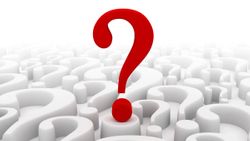
OR WAIT null SECS
- About Us
- Advertise
- Contact Us
- Editorial Info
- Editorial Advisory Board
- Do Not Sell My Personal Information
- Privacy Policy
- Terms and Conditions
© 2025 MJH Life Sciences™ , Pharmaceutical Technology - Pharma News and Development Insights. All rights reserved.
The fall and rise of biopharma
Pharmaceutical Technology Europe
The ¤9.5 billion therapeutic antibody market comprises over a dozen antibodies that have been generated using recombinant genetic methods developed over the last 20 years.
Since it emerged in the late 1970s, biotechnology has transformed the pharmaceutical industry. Biotechnology has become a core part of the pharmaceutical industry's R&D strategy, and biopharmaceutical products are a major part of its pipeline. Pharmaceutical companies rely on innovation, which biotechnology undoubtedly offers, and biotech companies nearly always require the financial and marketing power of Big pharma to turn innovation into a successful product. Nowhere is this more evident than in the area of therapeutic antibodies.
Simon Moroney
From the late 1970s to the early 1990s, most pharmaceutical companies regarded biotechnology with scepticism. There was a widespread belief among scientists and managers in big pharma, that proteins would never make commercially successful drugs. There were exceptions: one of the earliest successful partnerships was between Eli Lilly and Genentech, who, in 1982, launched the first commercially available recombinant human insulin. Other significant relationships between pharma and biotech were the result of crisis on the biotech side, examples being the acquisition of a majority stake in Genentech by Hoffmann La Roche in 1990, and the 1992 marketing relationship between Lilly and Centocor. The Genentec–Roche deal has been enormously productive, and has helped provide Roche with the strongest oncology franchise in the pharmaceutical industry — heavily based on biotech drugs developed at Genentech.
By the mid-1990s, the biotechnology sector had demonstrated that it could generate commercially successful products while the productivity of chemistry-based pharmaceutical R&D was in decline. Pharmaceutical companies recognized the need to retool and, in the race to discover and market new drugs, turned increasingly to biotech for technology and products.
The reliance of pharma on biotech is best exemplified in the field of antibodies. After a slow start, and several major setbacks relating to new potential sepsis treatments in the early 1990s, (for example, Centocor's Centoxin and Xoma's E5), therapeutic monoclonal antibodies are now providing a very rich pay-off for those companies with the courage to pursue them. The €9.5 billion ($12 billion) therapeutic antibody market comprises over a dozen antibodies that have been generated using recombinant genetic methods developed over the last 20 years.
Clear evidence of the commercial potential of therapeutic antibodies came in the late 1990s, with the success of drugs such as Rituxan, Remicade and Herceptin. This success triggered wide-scale interest in recombinant antibody technology, and created a surge of partnering activity between pharmaceutical firms and those biotech companies that had developed proprietary antibody technologies: PDLI, Abgenix, Medarex, Cambridge Antibody Technology (CAT), MorphoSys and others. Most of the deals were based on technology licenses, involving varying amounts of technology internalization by the pharma company. In most cases, the antibody specialist performed all of the 'front-end' generation of the lead molecule, before handing over to the pharma company for formal development. This represented the fastest and most convenient way for pharma to use modern antibody technology in their drug discovery programmes.
Recently, signs have emerged to suggest that big pharma's flirtation with therapeutic antibodies is turning into a serious affair. In 2005, Hoffmann La Roche surprised many in the industry by acquiring the private Swiss company GlycArt Biotechnology AG for €150 million ($190 million). This was a technology-based deal as Roche saw substantial value in integrating the GlycArt technology into its therapeutic antibody R&D. In August 2005, Pfizer acquired the privately held Bioren Inc. The most significant antibody deal occurred in December 2005, when Amgen acquired Abgenix for almost €1.73 billion ($2.2 billion). This deal was clearly about products — Amgen is highlighting full ownership of the previously shared cancer drug panitumumab, as well as eliminating a royalty obligation on denosumab (an antibody in clinical development for a range of inflammatory and musculoskeletal conditions). Since January 2006, drive has been constant as Merck & Co. purchased antibody technology companies Abmaxis and GlycoFi, and AstraZeneca has made an offer for CAT.
Only time will tell to what extent the increasing commitment by pharma to therapeutic antibodies will pay off. However, the events of the last few years in the field of therapeutic antibodies may well foreshadow the development of other segments of the biotech industry: the progression by big pharma from scepticism, through partnership, to the full embrace of acquisition.
Simon Moroney is CEO at MorphoSys AG, Germany.



